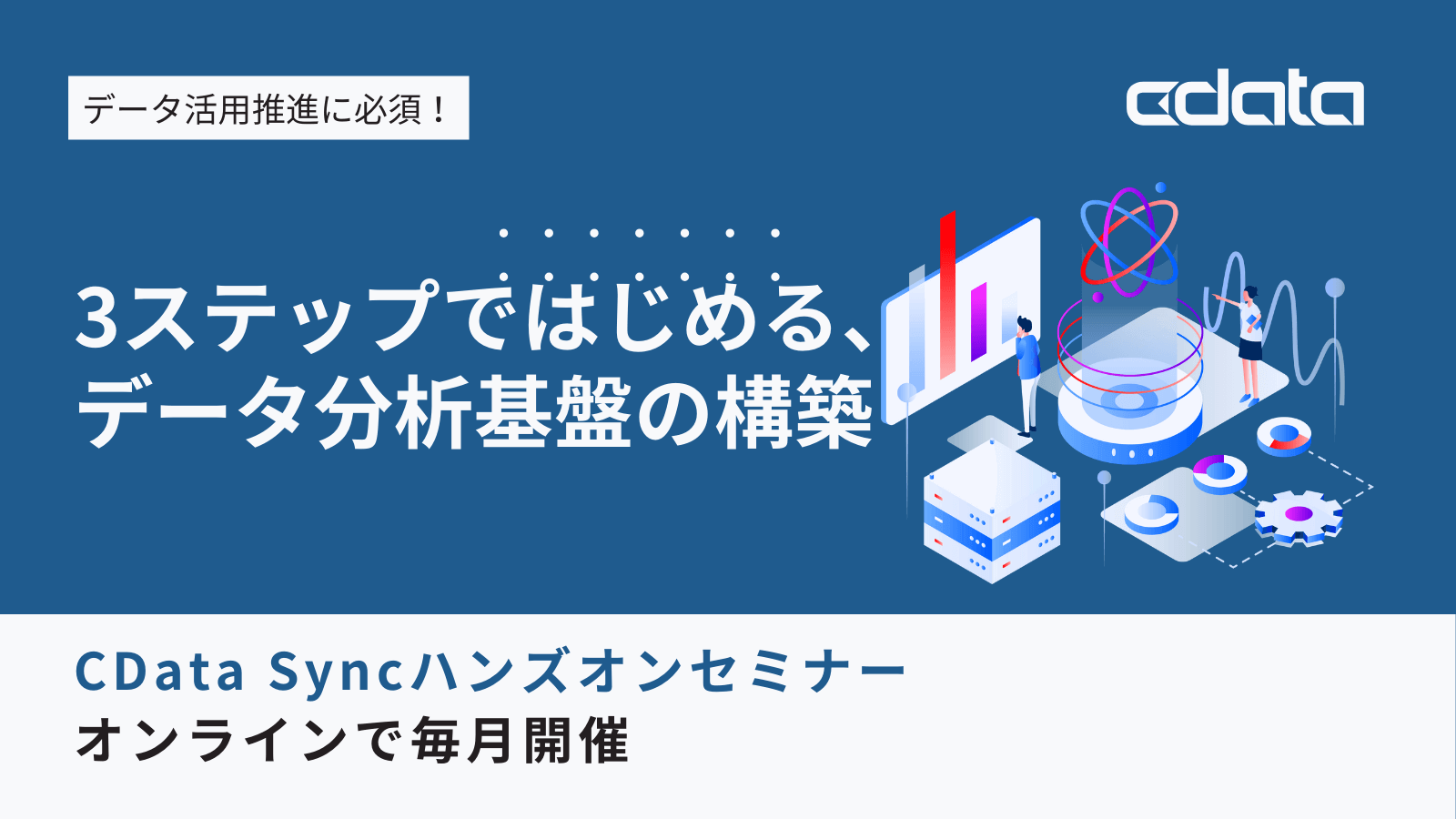ノーコードでクラウド上のデータとの連携を実現。
詳細はこちら →CData Software Japan - ナレッジベース
Latest Articles
- MySQL のデータをノーコードでREST API として公開する方法:CData API Server
- CData Sync AMI をAmazon Web Services(AWS)で起動
- Connect Cloud Guide: Derived Views, Saved Queries, and Custom Reports
- Connect Cloud Guide: SSO (Single Sign-On) and User-Defined Credentials
- Connect Cloud クイックスタート
- Shopify APIのバージョンアップに伴う弊社製品の対応について
Latest KB Entries
- DBAmp: Serial Number Expiration Date Shows 1999 or Expired
- CData Drivers のライセンスについて
- Spring4Shell に関する概要
- Update Required: HubSpot Connectivity
- CData Sync で差分更新を設定
- Apache Log4j2 Overview
ODBC Drivers
- [ article ] Crystal Reports にTwilio を連携してTwilio データを使った帳票を作成
- [ article ] SAP ByDesign ODBC データソースとの間にInformatica マッピングを作成
- [ article ] SAS JMP でのCData ODBC Driver for Splunk の使用
- [ article ] Business b-ridge データをSQL Server に同期(キャッシュ)する方法
JDBC Drivers
- [ article ] ローコード開発・運用プラットフォームMendix でHarperDB に連携したアプリを作成する
- [ article ] エンタープライズサーチのNeuron にCassandra データを取り込んで検索利用
- [ article ] Aqua Data Studio からBullhorn CRM データに連携
- [ article ] Spotfire Server から Oracle HCM Cloud Operational ...
SSIS Components
- [ article ] MongoDB データからSQL Server ...
- [ article ] SSIS を使ってSquare データをSQL Server にインポート
- [ article ] Amazon Athena をSSIS 経由でSQL サーバーにバックアップする
- [ article ] SAS xpt をSSIS 経由でSQL サーバーにバックアップする
ADO.NET Providers
- [ article ] Entity Framework 6 からStripe データに連携
- [ article ] Infragistics WPF XamDataGrid と Trello をデータバインド
- [ article ] Infragistics WPF XamDataGrid と Amazon S3 をデータバインド
- [ article ] SSIS を使ってTeradata データをSQL Server にインポート
Excel Add-Ins
- [ article ] Excel を使ってGoogle Ads にデータを追加したり、Google Ads ...
- [ article ] SharePoint Excel Services からCData ODBC Driver for ...
- [ article ] SharePoint Excel Services からCData ODBC Driver for ...
- [ article ] Microsoft Power BI Designer でCData Software ODBC ...
API Server
- [ article ] TIBCO Spotfire から、ODBC 経由でOData データに連携してビジュアライズ
- [ article ] OData データをDevExpress Data Grid にデータバインドする。
- [ article ] SaaS 連携データベース Yoom を使ってExcel データを使ったフローボットを作成する
- [ article ] JDBC データソースでOData との間にInformatica マッピングを作成
Data Sync
- [ article ] Redis データをSQL Server に連携して利用する4つの方法を比較
- [ article ] Azure Synapse へのZuora データのETL/ELT ...
- [ article ] Snowflake へのSnapchat Ads データのETL/ELT ...
- [ article ] JSON データをSQL Server に連携して利用する4つの方法を比較
Windows PowerShell
- [ article ] PowerShell を使ってeBay データをSQL Server にレプリケーション
- [ article ] Certinia データをPowerShell script でSQL Server ...
- [ article ] PowerShell からJira Service Desk ...
- [ article ] PowerShell からKingdee K3 WISE ...
FireDAC Components
- [ article ] Delphi のNeo4J データへのデータバインドコントロール
- [ article ] Delphi のAct-On データへのデータバインドコントロール
- [ article ] Delphi のBing Ads データへのデータバインドコントロール
- [ article ] Delphi のXero WorkflowMax データへのデータバインドコントロール





